PADM: Silence and Mindfulness in the Montessori Primary Environment
“When the children have become acquainted with silence…(they) go on to perfect themselves; they walk lightly, take care not to knock against the furniture, move their chairs without noise, and place things upon the table with great care…. These children are serving their spirits.” Maria Montessori, Dr. Montessori’s Own Handbook This month, we will be […]
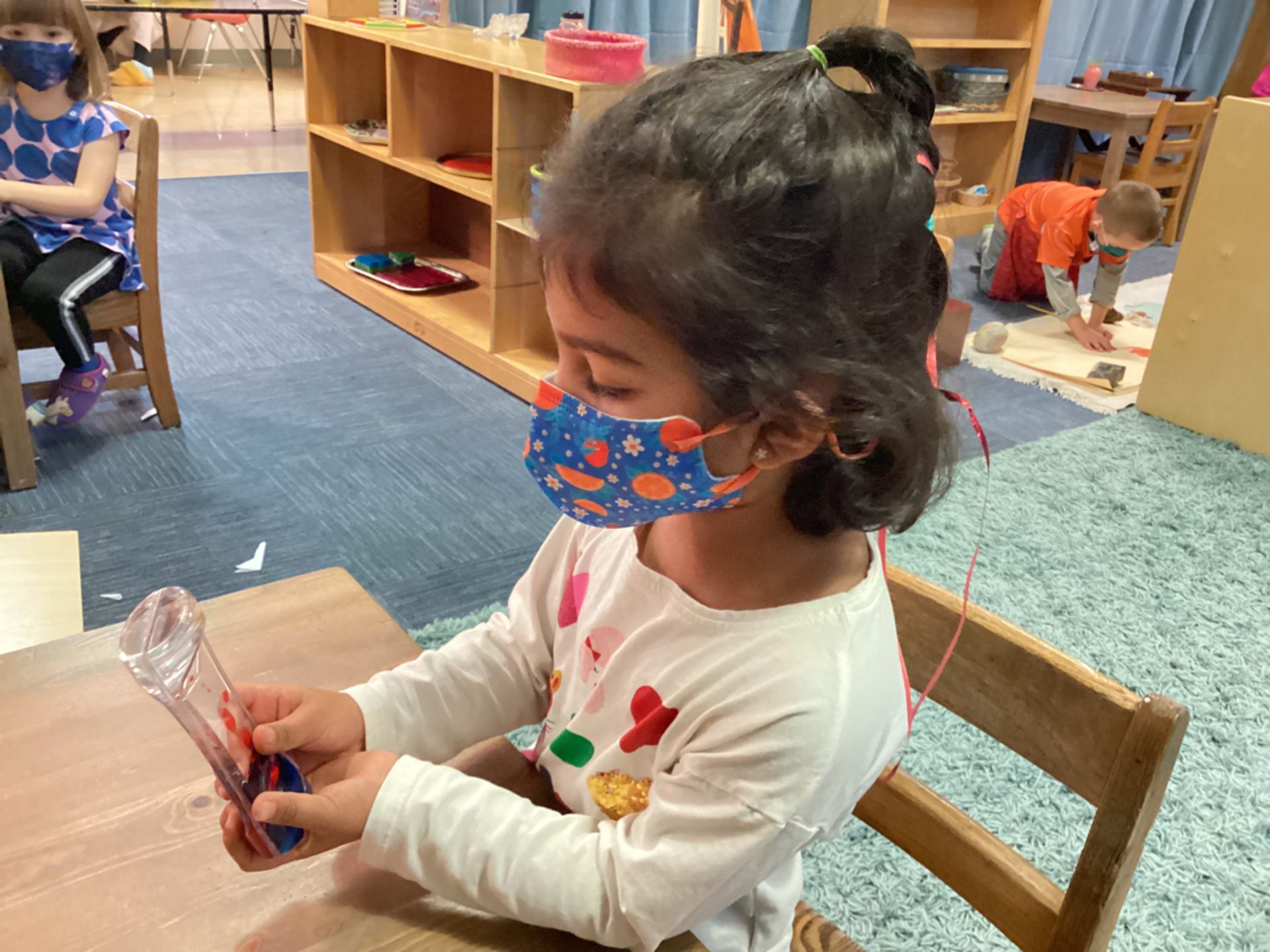
“When the children have become acquainted with silence…(they) go on to perfect themselves; they walk lightly, take care not to knock against the furniture, move their chairs without noise, and place things upon the table with great care…. These children are serving their spirits.”
Maria Montessori, Dr. Montessori’s Own Handbook
This month, we will be highlighting the traditional Montessori exercise called the ‘Silence Activity’, how we practice it in Primary ADM, and how and why we have incorporated mindfulness and meditation into our classroom community norms and routines.
Dr. Montessori was inspired to create the Silence Activity after an unplanned visitor came to the first Casa dei Bambini- Primary environment. Maria Montessori noticed the children’s capacity for and love of silence when a mother came with her infant to the classroom. While Dr. Montessori held the baby, the baby was so calm and quiet, she challenged the older children to match the stillness and silence. She didn’t anticipate the effort and capacity of the children to match the infant’s silence, they even matched the baby’s breathing.
“Soon they were aware of drops of water falling outside in the courtyard, and of the song of a bird in a distant tree. The children each silenced their own movements and produced a collective quiet that was for them a profound experience.” (Montessori, Secret of Childhood)

The Montessori concept of silence is a state of calm and stillness willed by the child and arrived at through self-direction and spontaneous interest. Although it is often believed that children are naturally noisy and unruly, the silence activity is evidence that this is a misconception. Our children are eager to make silence and enjoy the challenge. It is a purposeful inhibition of movement and an extension of purposeful coordinated movement. Making silence is a pure act of will. The children must control their movement and speech to participate. It requires deep concentration and control.
Most importantly, the silence activity is not something we, as adults, impose on the children. It is something they enter into freely and joyfully. All the children in the room must participate for it to be a true silence activity. If we have a child who is not ready to make silence with the rest of the group, they can be taken on a walk or assist in a task outside the classroom. Because this activity involves the whole group, it is a method for strengthening social cohesion. They must all work together and support one another in making and maintaining silence. As the children are successful they build trust and confidence in themselves and each other.
There are several exercises that help the children develop their capacity to make silence. Working with the materials of practical life help your child to develop coordination, will, and self-control. Walking on the line is also a good preparation for making silence. The sensorial materials, especially the auditory materials, help to sharpen their senses and refine their understanding of silence. There are also games and exercises that directly prepare the skills the children will need to successfully participate in the silence activity.

It can be formal or informal after it has been presented. Perhaps there is a time when the guide just places out a sign with the word ‘silence’ and the children begin spontaneously. The guide might begin by creating silence and the children follow suit. In other cases the children may be formally gathered to participate in the silence activity. But it is never used as a punishment or a punitive measure to quiet a chaotic or noisy room. It is an activity full of joy and wonder.
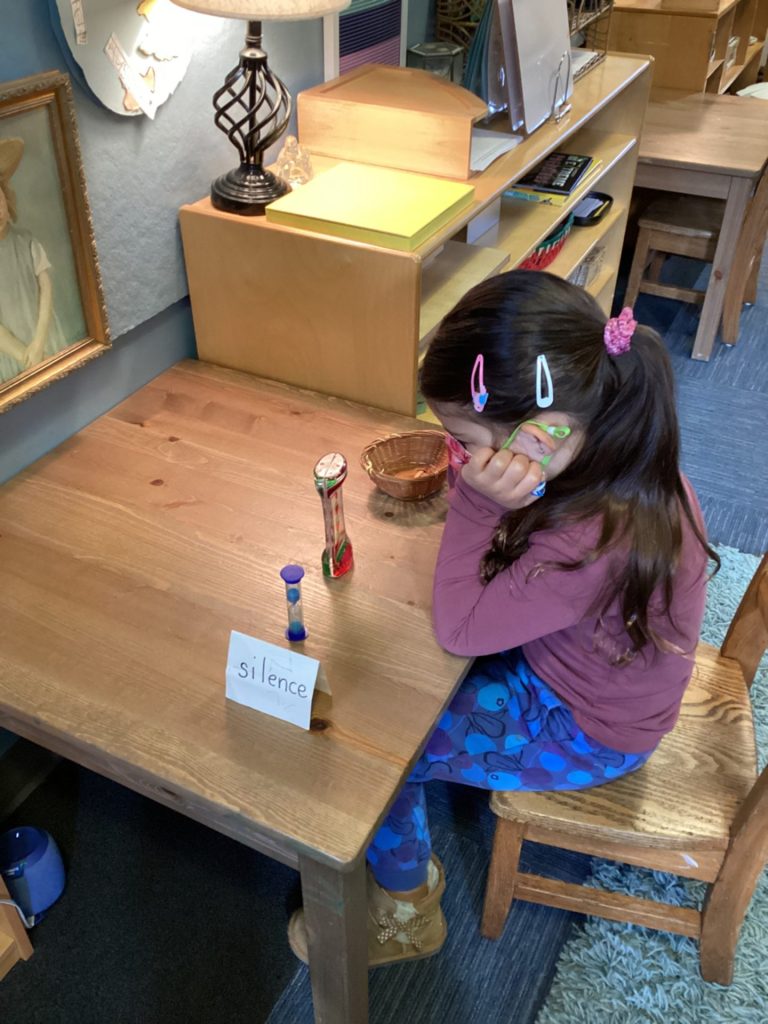

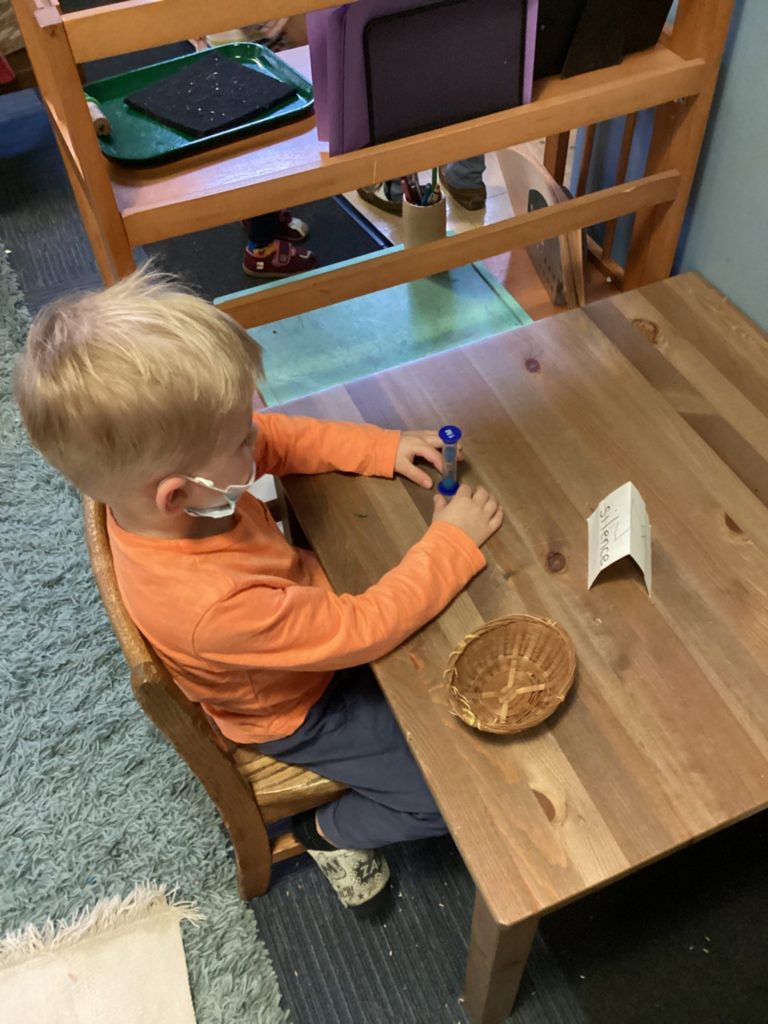
In Primary ADM, we have several ways that we practice the silence activity. At times, we might practice making silence- as we call it- at circle together with a candle and a sand timer. Typically after we make silence together we will reflect on what we noticed or felt while the room was silent. Often children remark on hearing noises they didn’t notice before, feeling calm, or sensing a particular part of their body. The children can choose to practice making silence at a table with a sand timer and a small sign that reads ‘silence’.
Here are some of the exercises we use at circle or in a small group that help to build the skills to make silence.
The Bell Game

At circle, we have a series of bells made of different materials that the children are familiar with. Each bell makes a distinct sound. For instance, the pewter bell has a deep, low pitched ring and the tiny silver bell has a high, tinkly ring. First, we start by ringing each bell as the adult names it. Then the children are invited to close their eyes- if they wish to play- while the adult rings the bell. If they have a guess, they can raise a quiet hand and name the bell they think they heard. After a child has correctly guessed the bell, we listen to it again with eyes open. The game continues like this until all the bells have been rung a few times.
Whisper Game
To dismiss from circle, we will ask the children to close their eyes and we whisper their name. When they hear their name, they stand up silently to leave the circle. We play an extension of this by calling one child by their name to come to the adult. We whisper another child’s name in their ear and they go to tap them. After they have tapped the other child, they leave the circle. Once they are tapped, they come to the adult to have a name whispered in their ear. It continues like that until all the children have been dismissed. Both of these games require that even as a child is dismissed, they must continue in silence so as not to disturb the group left at circle.
Pass the Pose
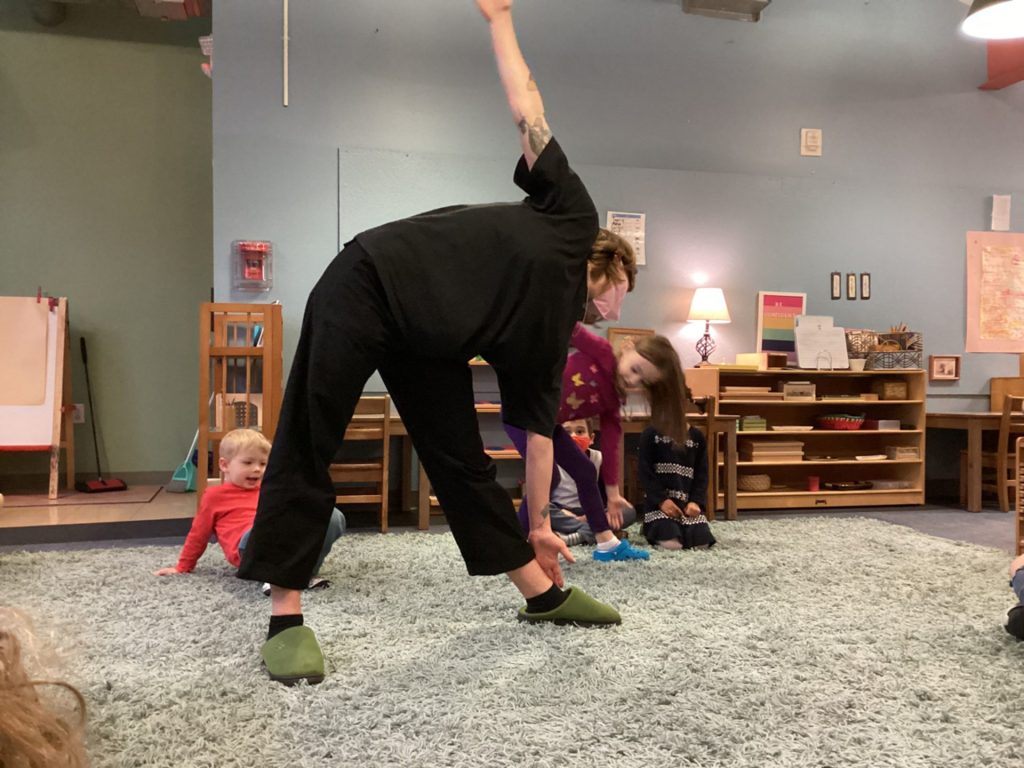
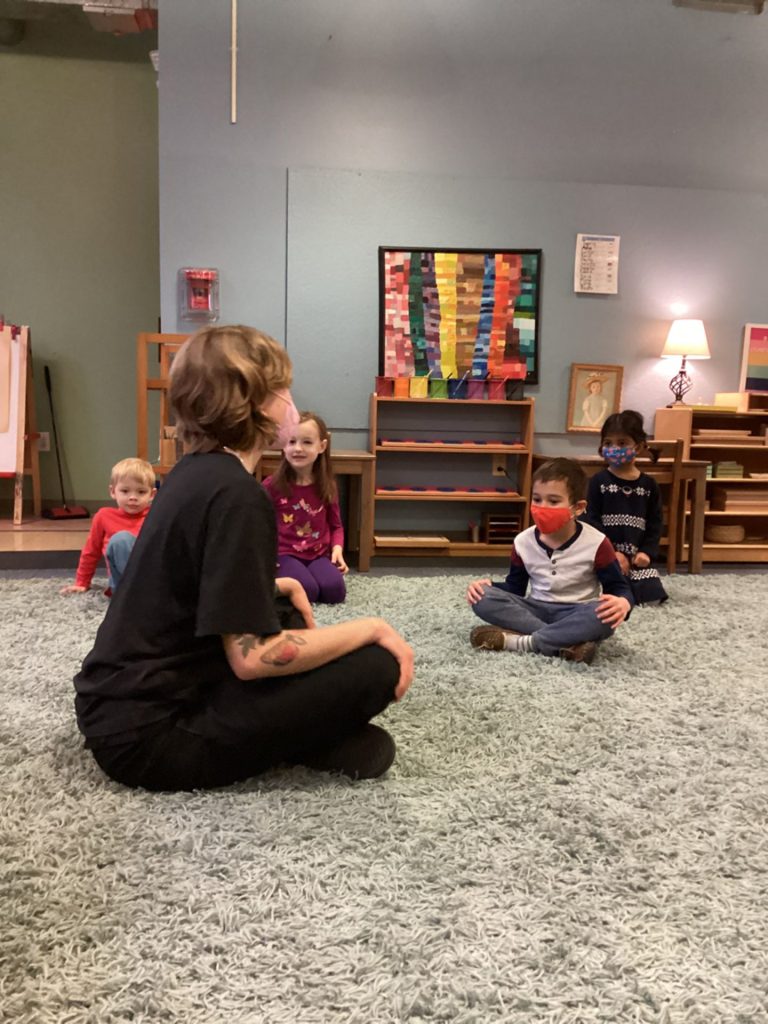
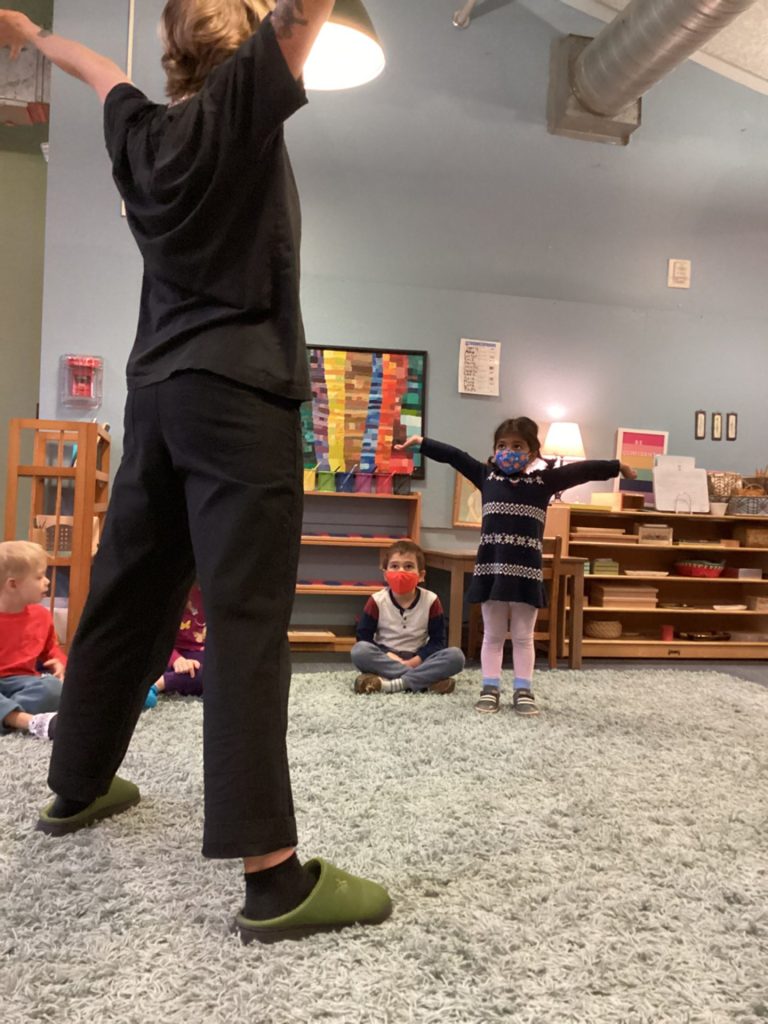
At circle, the adult will pose their body, hold it still, and invite one child to copy their pose. The adult will create the poses a few times, inviting different children to copy each time. After playing this way a few times, we would choose a child to create a pose and invite a friend to copy. Eventually, we might even use this game as a way to dismiss from circle. After the child creates a pose and invites a friend, they can leave the circle.
Listening Activity


The adult brings a tray full of familiar objects that make noise, e.g., a stapler, a pencil sharpener and a pencil, a hole puncher and a piece of paper, scissors and a piece of paper, etc. The tray is covered by a piece of fabric. The children can sit with eyes open or closed and listen as the adult uses each object under the fabric one at a time and the children can guess what made the sound. After a few guesses, the adult uncovers that object and repeats the action so the children can see and hear it at the same time. This repeats until all the objects have been uncovered.
Pass the Bell

We play this game to dismiss from circle, similar to the Whisper Game. The adult brings a bell to circle and demonstrates how to walk with the bell while keeping it silent. The adult passes it to a child and that child walks with the bell while keeping it silent. They pass the bell to another child at circle. Once they have passed the bell, they may leave circle. This continues until all the children have been dismissed.
All of these activities help to increase your child’s ability to use their will to create silence and stillness. As a community, the children have developed a deep respect for the silence they create together. They work together as a unit to maintain it and give each other silent reminders when they are needed.
How We Have Incorporated Mindfulness
As a further extension of the exercises of the silence activity, we have also been practicing meditation and mindfulness regularly this year. We have done this through the inclusion of yoga, morning meditations, classroom affirmations, meditation cards, and books on mindfulness.
Yoga



We have incorporated yoga into the classroom in a big way this year. We have been using books and yoga cards while also taking full advantage of Ms. Shawn and Ms. J’s expertise as yoga teachers. We frequently start our mornings with yoga as a large group and children often choose to take yoga work off the shelf throughout the day. It has been so wonderful to watch them become so familiar with the poses and even the Sanskrit names!
Morning Meditations
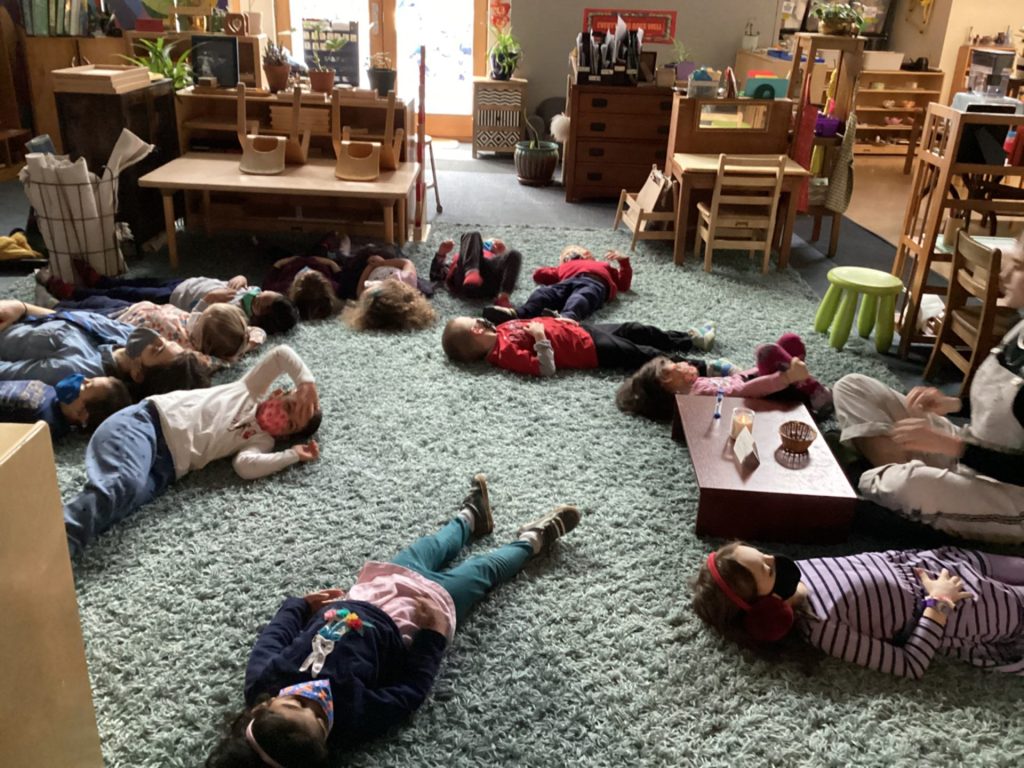
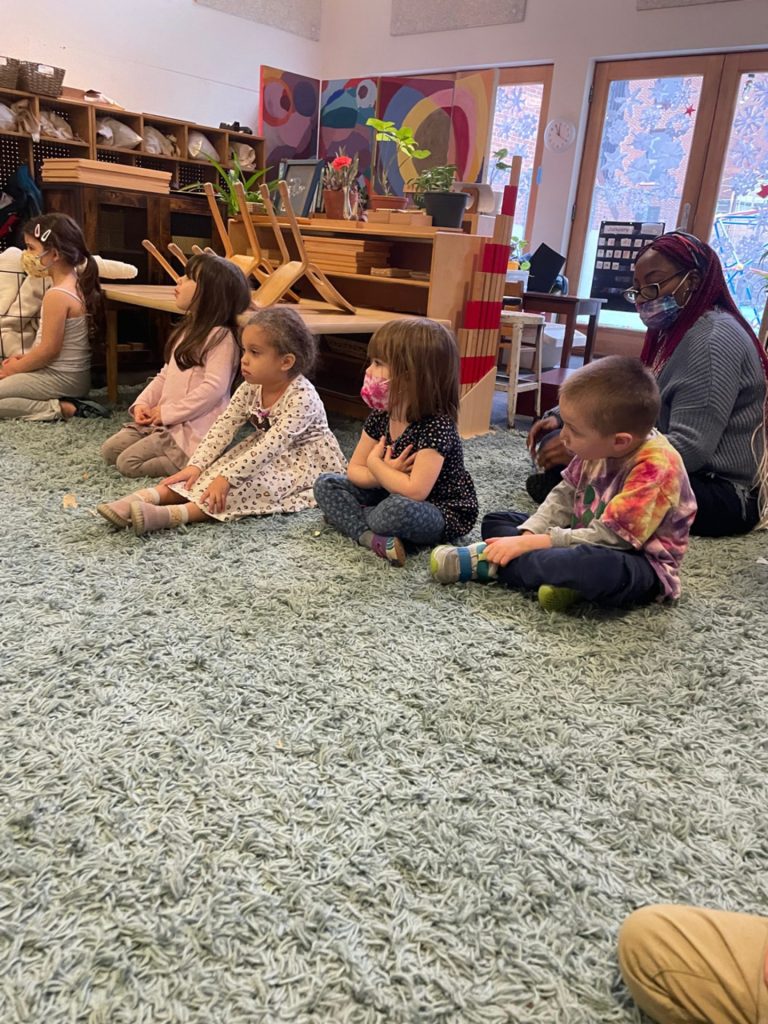

At least once a week, we start our morning with a five minute meditation. Sometimes we use the Calm app and meditate together. Other times, the adult leads the group in a short meditation. We have learned about Loving-Kindness meditations- where you send loving thoughts to yourself, loved ones, and the community-, Body Scans- where you focus on one body part at a time-, and counting our breaths to help focus our minds.
Classroom Affirmations

Our Kindergartners created affirmations for our class to read and repeat. On occasion we will take our letter board down and talk about what the words mean and how we can embody them throughout the day. We recite the words together.
Meditation Cards

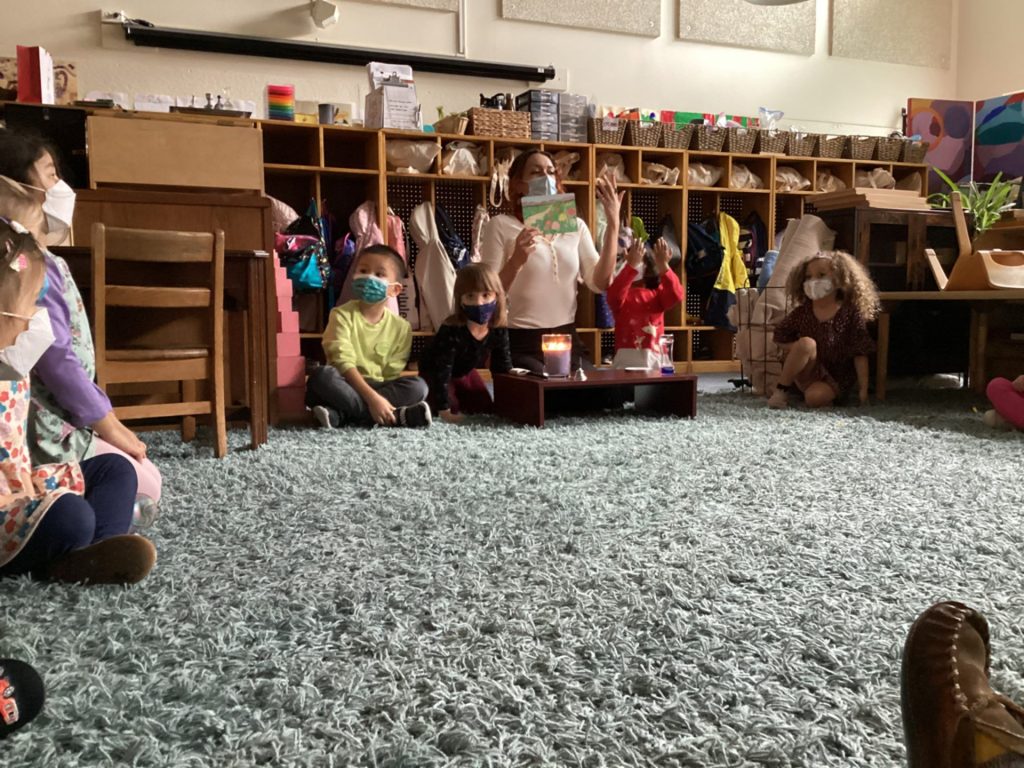
We have a set of cards with beautiful illustrations on one side and stories on the other. We always start with a breathing exercise that involves counting our breaths to focus our minds. A child or an adult will choose a card and then the adult reads the text on the back that typically involves a calming visualization.
Books on Mindfulness
Here are some of the books we have been reading that help start conversations about meditation or mindfulness:
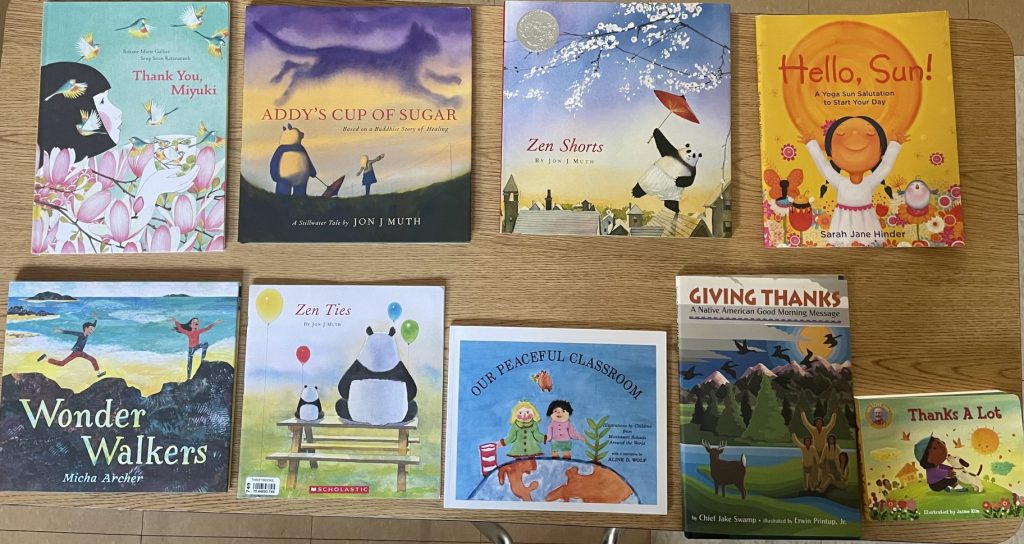
Why We Have Incorporated Mindfulness
“Let us always remember that inner discipline is something to come, and not something already present…. Discipline is born when the child concentrates his attention on some object that attracts him…. Thanks to these exercises, a wonderful integration takes place in the infant soul, as a result of which the child becomes calm, radiantly happy, busy, forgetful of himself and, in consequence, indifferent to prizes or material rewards. These little conquerors of themselves and of the world about them are real supermen, who show us the divine worth of man’s soul. ”
Maria Montessori, The Absorbent Mind
In a Montessori classroom, our most sacred aim is to provide an environment that allows children to develop concentration. Dr. Montessori discovered that through concentration, children were able to develop into conscious, kind, joyful, careful, and disciplined learners. We have the immense privilege of witnessing this transformation in your children everyday as they find work that engrosses them and they grow their capacity for concentration. We have found that mindfulness and meditation are tools we can employ to support your child’s burgeoning concentration and focus. Recent studies suggest that meditation is associated with an increase in the density of gray matter in the hippocampus. The hippocampus is a region of the brain associated with learning and memory, as well as emotional regulation. (These studies and other interesting findings are linked below.) This supports what we see and feel on a daily basis. The children use the techniques we practice during meditation to help when they are feeling stressed, uncomfortable, or upset- especially the breathing techniques. We have also noticed that they are able to sit in silence or meditate for longer periods of time now that we have been consistently practicing. We are hopeful that these practices will support the children as we transition into the new building.
The Meditative Mind: A Comprehensive Meta-Analysis of MRI Studies
Impact of Daily Student Meditation on Focused Attention in a 3 to 6-year-old Montessori Classroom
As always, if you have practices you engage in at home that you feel would help to compliment what we have started in school, please share them with us!
A few important reminders before we sign off:
2/6: RESCHEDULED Parent Coffee at 8:15 in person at 2133 or on Zoom: We will be discussing the transition to the new building and how to support children through transitions more generally.
2/9: Valentine Celebration in the classroom: This is totally optional! If your child would like to bring in valentines, we will be handing them on on this day.
2/13-2/17: SCHOOL CLOSED: The Move!: The school will be closed this week so we can prepare our new space. School will resume on Monday 2/20.
2/20: First Day of School in the new building: 55 N 22nd will be open for business, finally!
2/26: Winter Family Social from 10-20 at Franklin Square.
3/6: Food Drive
3/17: SCHOOL CLOSED: Professional Development
3/22: Parent Ed Workshop with Ms. Michelle and Ms. Maggie: This session will focus on Child development through a Montessori lens focusing on the sensitive periods.
3/227-3/31: SCHOOL CLOSED: Spring Break
Thank you,
Ms. Maggie, Ms. Amanda, Ms. Allison, Teacher Bailey, Ms. J, and Ms. Shawn
Parent Education RSVP: When is the best time for my child to learn x, y, and z? The “Sensitive Periods”
Read More



